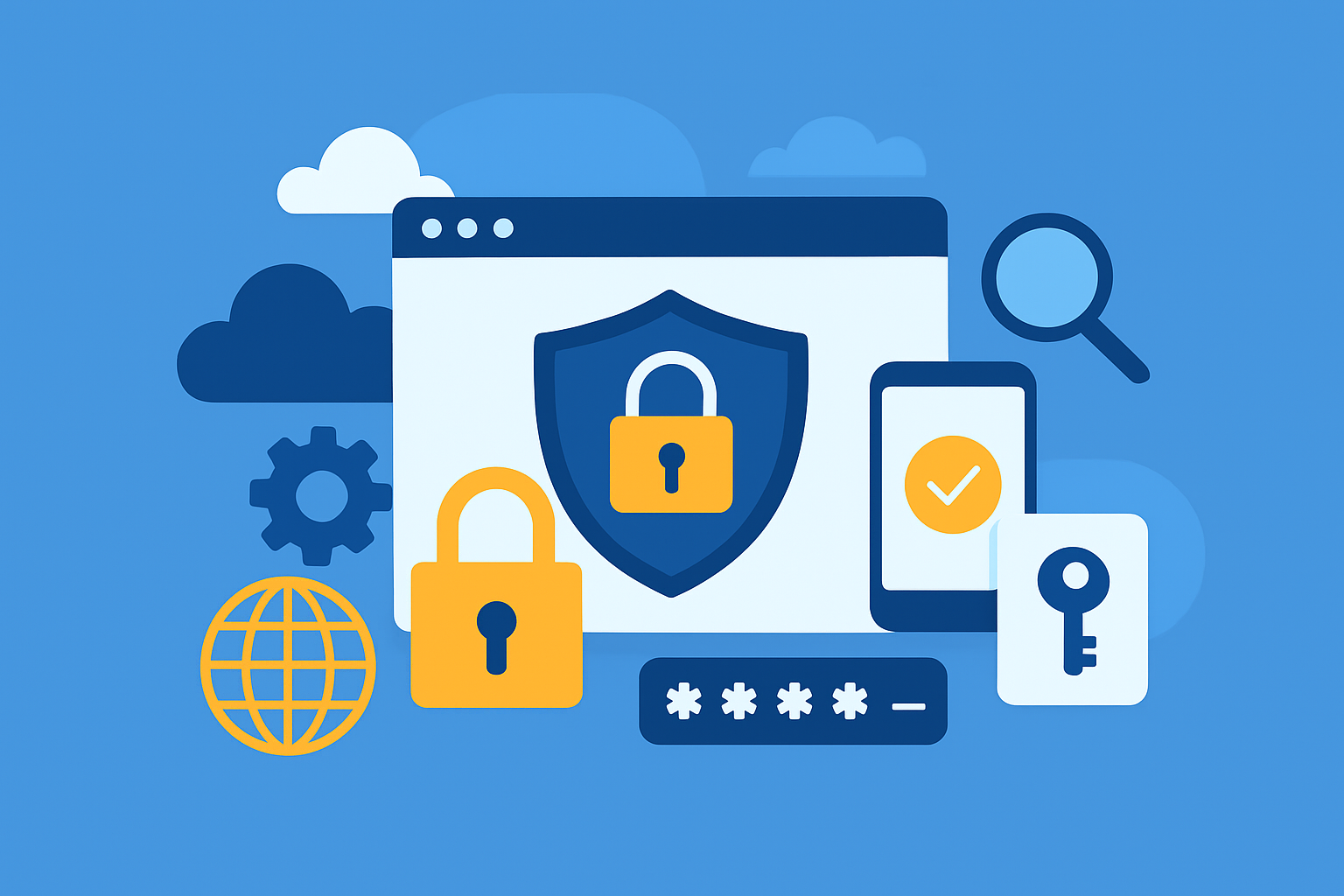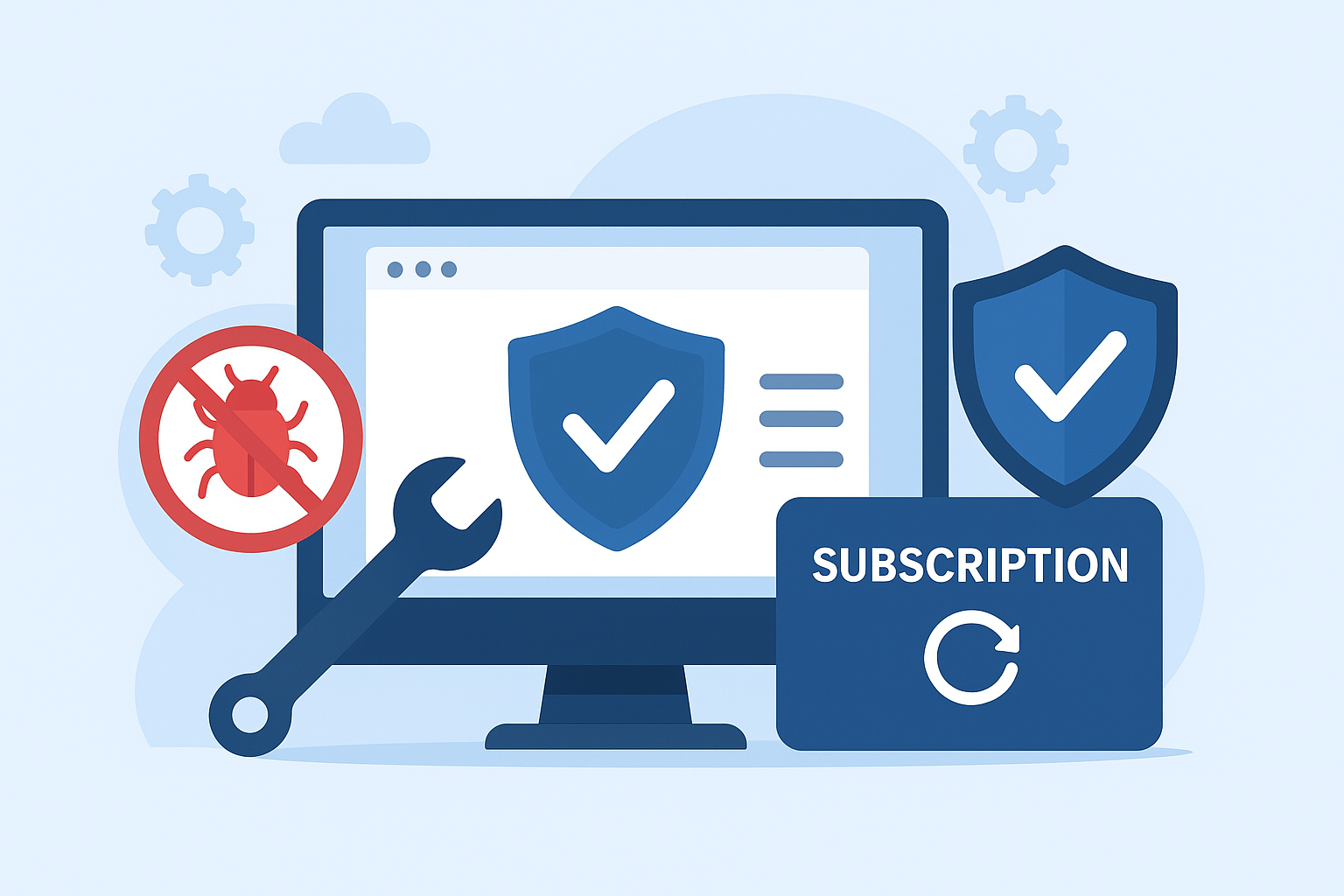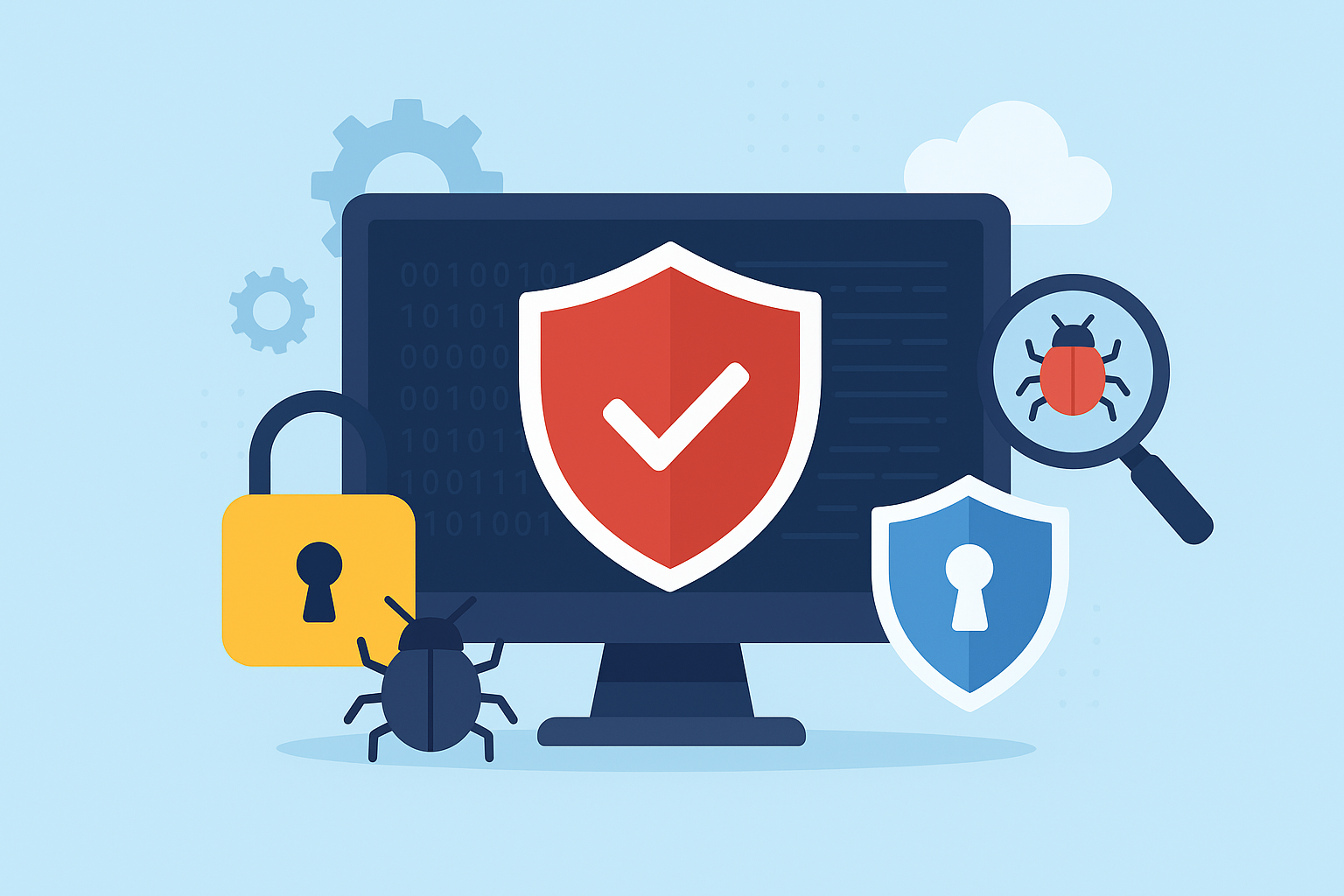In today’s rapidly evolving digital landscape, Website Hardening Services have become the cornerstone of online protection. As cyber threats multiply and hackers become more advanced, website owners must ensure their online assets remain secure from data breaches, unauthorized access, and malware attacks. Website hardening is not merely about adding security plugins — it’s about creating a layered, impenetrable defense system that strengthens every component of your site’s architecture. Whether you operate a small business or manage a large online platform, implementing professional website hardening strategies is essential to ensure maximum uptime, protect customer data, and maintain long-term trust in your digital brand presence.
Introduction
In the age of digital transformation, where websites serve as the core of every business, ensuring robust online security is more important than ever. Cybercriminals constantly look for weaknesses, exploiting outdated software, weak passwords, and unsecured configurations to infiltrate sites. Website hardening is the process of systematically reinforcing your website’s security, reducing its vulnerability to potential attacks, and ensuring continuous, uninterrupted service.
At FixHackedSite, we understand that every website deserves top-tier protection against evolving cyber threats. Our Website Hardening Services focus on safeguarding your website from malware, brute-force attacks, unauthorized logins, and data theft. The goal is not only to fix vulnerabilities but also to create a strong digital armor that prevents hackers from even getting close.
Through this comprehensive guide, you’ll learn the importance of website hardening, how it works, and why professional protection is no longer optional but essential. Let’s dive into the details of how a well-secured website can make a world of difference in today’s high-risk online environment.
Understanding the Concept of Website Hardening
Website hardening refers to the practice of fortifying your site’s security framework to make it more resistant to cyberattacks. It’s a process that goes beyond simple antivirus tools and firewall configurations — it’s about securing every layer of your website, from the server and CMS to plugins and databases. The main idea behind this strategy is to minimize attack surfaces, block common entry points, and reduce the likelihood of successful exploitation.
In the modern internet ecosystem, threats such as malware, ransomware, phishing, and SQL injection have become more advanced and harder to detect. Therefore, website hardening has evolved into a proactive approach rather than a reactive one. By reinforcing your website’s defenses before a hacker strikes, you can save your business from catastrophic losses, data corruption, and downtime that could affect both your credibility and customer trust.
When implemented correctly, website hardening helps create a multilayered shield that prevents cybercriminals from exploiting your system. This approach combines various security elements such as file permission control, SSL enforcement, strong authentication, and server configuration. It is the ultimate digital armor — a continuous commitment to protecting your online presence against ever-evolving threats.
Why Website Hardening Is Essential in 2025
In 2025, cyberattacks have reached unprecedented levels of sophistication. Hackers are now leveraging automation, AI, and deep learning to find vulnerabilities faster than ever. This new era of intelligent cyber threats has made website hardening an absolute necessity rather than a choice. Whether you manage an eCommerce site, corporate platform, or personal blog, even the smallest vulnerability can open the door to devastating attacks.
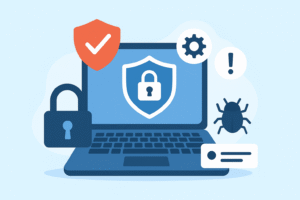 One of the key reasons website hardening is essential is because it provides an early defense mechanism. It identifies and mitigates weak points before hackers can exploit them. Websites that rely solely on standard antivirus tools or firewalls often fail to address deeper vulnerabilities at the server or database level. Hardening ensures that all layers of your system — including software, plugins, and hosting environments — work together to maintain maximum security and stability.
One of the key reasons website hardening is essential is because it provides an early defense mechanism. It identifies and mitigates weak points before hackers can exploit them. Websites that rely solely on standard antivirus tools or firewalls often fail to address deeper vulnerabilities at the server or database level. Hardening ensures that all layers of your system — including software, plugins, and hosting environments — work together to maintain maximum security and stability.
Moreover, the importance of website hardening services extends beyond cybersecurity. A hardened website also performs better in terms of speed, reliability, and search engine optimization (SEO). Google and other search engines prioritize websites with secure configurations, meaning your investment in website hardening directly contributes to improved visibility, credibility, and user trust. In 2025, where digital competition is fierce, security and performance are inseparable aspects of online success.
Key Components of Effective Website Hardening
A truly hardened website is built upon several interlinked security components that work harmoniously to defend against cyberattacks. The first and most critical element is server configuration. Ensuring that your hosting environment is properly set up with the latest patches, secured ports, and restricted access helps eliminate backdoors that hackers often exploit. The second component is CMS security — whether your website runs on WordPress, Joomla, or Drupal, maintaining updates, disabling unused plugins, and enforcing strong user roles are all part of a solid security foundation.
Another vital component is authentication security. Implementing strong passwords, two-factor authentication, and limited login attempts drastically reduce the risk of brute-force attacks. Additionally, enabling SSL certificates and HTTPS across all pages guarantees encrypted data transmission, protecting sensitive user information from interception. These technical measures ensure both privacy and trust, especially for websites handling payments or confidential user data.
Finally, continuous monitoring is an essential pillar of website hardening. Security is not a one-time process — it requires ongoing attention, regular audits, and proactive updates. By combining these key elements into a comprehensive strategy, you can build a website that’s not only functional and fast but also resilient against today’s most advanced cyber threats.
The Role of Server Security in Website Hardening
Server security forms the foundation of any robust website hardening strategy. Your server is the backbone of your website, and any compromise at this level can expose the entire system to potential attacks. The goal of server hardening is to eliminate vulnerabilities, close unnecessary ports, and ensure that your hosting environment is properly configured. This includes keeping your operating system updated, limiting administrative access, and ensuring file permissions are strictly enforced. A weak server configuration can turn into an open door for hackers, allowing them to gain control, plant malware, or steal sensitive information without detection.
Another important aspect of server security is implementing firewalls and intrusion detection systems that can identify suspicious activities in real-time. These tools monitor traffic patterns, detect anomalies, and automatically block unauthorized access attempts. Additionally, encrypting server communications with SSL/TLS ensures data integrity and confidentiality during transmission. When configured correctly, your server acts as the first and most powerful barrier against cyber threats, preventing malicious activities long before they can reach your website’s code or database.
Proper server management also involves regular backups and disaster recovery planning. Even the most secure systems can experience unforeseen issues such as hardware failure or a sophisticated attack. Having automated and encrypted backups ensures that your data can be restored quickly and safely. With a hardened server environment, your website gains the resilience needed to withstand evolving threats, protect critical assets, and maintain uninterrupted service for your users.
Importance of SSL Certificates and HTTPS
One of the most fundamental yet overlooked components of website hardening is the proper implementation of SSL certificates. SSL, or Secure Sockets Layer, establishes an encrypted connection between your web server and users’ browsers, ensuring that all transmitted data remains private and secure. When your website uses HTTPS (the secure version of HTTP), it protects sensitive information such as login credentials, payment details, and contact forms from being intercepted by hackers. The presence of a padlock symbol in the browser’s address bar is not only a sign of trust but also a signal that your website takes security seriously.
In addition to data encryption, SSL certificates play a vital role in enhancing search engine ranking. Google and other major search engines now prioritize HTTPS-enabled websites, meaning that installing SSL not only boosts your security but also your online visibility. This makes it a dual-benefit solution — one that strengthens both your cybersecurity framework and SEO strategy. Furthermore, modern browsers actively warn users about insecure websites without HTTPS, which can lead to loss of visitors, lower engagement, and damaged credibility.
When it comes to website hardening, ensuring all subdomains, redirects, and external resources use HTTPS is equally critical. Mixed-content issues (where secure and insecure resources load together) can weaken encryption strength and create exploitable vulnerabilities. Therefore, a comprehensive SSL configuration should include automatic HTTPS redirection and renewal of certificates. By doing so, you not only ensure continuous protection but also reinforce user confidence and establish a trusted online identity that contributes to your brand’s long-term success.
Securing WordPress and CMS Platforms
WordPress and other content management systems (CMS) like Joomla and Drupal power millions of websites globally — and this popularity makes them prime targets for hackers. The flexibility and convenience of CMS platforms can sometimes come at a cost: vulnerabilities that arise from outdated plugins, weak admin credentials, or insecure themes. That’s why securing your CMS is one of the most essential aspects of website hardening. Regular updates, minimal plugin usage, and the removal of unused themes or scripts are the first steps in creating a strong defense.
For WordPress in particular, hardening the admin area can make a significant difference. Simple actions like renaming the default login URL, limiting login attempts, and enabling two-factor authentication greatly reduce the chances of brute-force attacks. It’s also crucial to ensure file permissions are properly configured — for example, preventing public write access to sensitive directories like /wp-content/ and /wp-config.php. These configurations not only block unauthorized changes but also prevent attackers from injecting malicious code or uploading malware through vulnerable entry points.
In addition to user-level security, database protection is equally vital in CMS hardening. By using unique database prefixes, limiting access credentials, and ensuring data encryption, you can make it much harder for hackers to exploit your system. Implementing these website hardening techniques ensures your CMS remains fast, secure, and resilient against attacks. Whether you manage a small business blog or a large corporate site, securing your CMS should always be at the top of your cybersecurity priorities.
Strengthening Authentication and Access Control
Authentication and access control are among the most critical pillars of website hardening. Weak passwords, shared credentials, and unrestricted access can create serious vulnerabilities in your website’s defense system. To counter these risks, it’s vital to enforce strong password policies that require complexity and regular updates. Every administrator, developer, or contributor account should have unique credentials. Equally important is restricting administrative privileges — granting users only the level of access they truly need. This approach, known as the principle of least privilege, ensures that even if an account is compromised, the attacker’s control remains limited.
To further enhance authentication security, implementing multi-factor authentication (MFA) is one of the best measures available. MFA adds an extra layer of protection by requiring users to verify their identity using more than just a password — such as a one-time code, biometric verification, or security key. This drastically reduces the success rate of brute-force or credential-stuffing attacks. Moreover, tracking login activity and enabling real-time alerts for suspicious attempts can help administrators quickly identify and mitigate unauthorized access before it escalates into a breach.
Effective access control also involves monitoring third-party integrations, APIs, and hosting accounts. Many breaches occur because of unsecured third-party services or inactive accounts that still have admin privileges. By routinely reviewing and revoking outdated access permissions, you can minimize the risk of internal misuse or external exploitation. A well-secured authentication and access control system ensures that only verified users can make changes, helping maintain the integrity and reliability of your entire website infrastructure.
Database Protection and Data Encryption
Your database is the heart of your website — it stores everything from user information and login credentials to content and configurations. Because of its value, the database is often a prime target for hackers. Database protection is therefore a vital aspect of website hardening that ensures sensitive data remains confidential and intact. One of the most effective ways to strengthen your database is to use unique prefixes for table names, especially on platforms like WordPress. This small but impactful step makes it harder for attackers to perform SQL injection attacks since default table names are no longer predictable.
Another essential measure in database hardening is encryption. Encrypting sensitive data, both in transit and at rest, ensures that even if hackers manage to gain access, the stolen information remains unreadable. Technologies such as SSL/TLS encryption, AES algorithms, and hash functions like bcrypt can be used to secure passwords, customer records, and payment details. Regularly rotating encryption keys and updating algorithms adds another layer of protection, making it nearly impossible for cybercriminals to decode your data without authorization.
Database security also depends on consistent monitoring and regular backups. Automated database backups stored in secure, offsite locations provide a safety net in case of corruption or ransomware attacks. By combining these methods — unique table prefixes, restricted database access, and encryption — you significantly reduce the attack surface. Effective website hardening services always include comprehensive database protection protocols, ensuring that your most critical digital assets remain safe from prying eyes.
The Importance of Regular Updates and Patch Management
One of the most common ways hackers gain access to websites is through outdated software and unpatched vulnerabilities. Every plugin, theme, CMS, or server application you use can potentially contain security flaws that need constant updating. That’s why regular updates and patch management play a pivotal role in website hardening. Cybercriminals often scan the internet for sites running outdated software, exploiting known vulnerabilities that could have been easily fixed through timely updates. Ignoring these patches is like leaving your front door unlocked in a high-crime area.
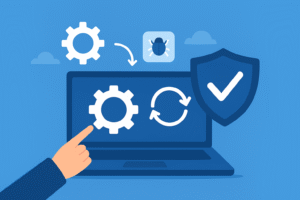 Effective patch management involves staying informed about new releases from your CMS, hosting provider, and plugin developers. Automating updates wherever possible can reduce human error and ensure your system remains consistently protected. However, before applying major updates, it’s always wise to create a complete backup to avoid data loss or functionality issues. The key is to strike a balance between immediate patching and system stability — implementing updates systematically ensures smooth operation while maintaining maximum protection.
Effective patch management involves staying informed about new releases from your CMS, hosting provider, and plugin developers. Automating updates wherever possible can reduce human error and ensure your system remains consistently protected. However, before applying major updates, it’s always wise to create a complete backup to avoid data loss or functionality issues. The key is to strike a balance between immediate patching and system stability — implementing updates systematically ensures smooth operation while maintaining maximum protection.
Additionally, patch management is not limited to your CMS or server alone; it also includes database software, SSL certificates, APIs, and third-party tools. Each of these components can contain vulnerabilities that need consistent attention. By developing a routine update schedule, documenting version histories, and using vulnerability scanning tools, you can ensure your website remains fortified against the latest threats. Regular updates are not just maintenance — they are an integral part of website hardening, representing proactive defense in a digital world that never stops evolving.
Firewall Configuration and Intrusion Prevention Systems
A properly configured firewall is one of the most powerful defenses in any website hardening strategy. Firewalls act as the gatekeepers between your server and the outside world, filtering all incoming and outgoing traffic based on predefined security rules. They help prevent malicious requests, unauthorized logins, and suspicious connections from ever reaching your website’s core files. By implementing a Web Application Firewall (WAF), you can detect and block common threats such as SQL injection, cross-site scripting (XSS), and distributed denial-of-service (DDoS) attacks. In simple terms, a firewall serves as the first line of defense against countless forms of cyberattacks that target websites daily.
To ensure maximum protection, firewall configuration must be tailored to your website’s specific architecture and traffic patterns. Generic firewall settings often fail to address the unique vulnerabilities of a site. A properly configured firewall examines traffic behavior, IP reputation, and even the type of content being requested. When combined with intrusion prevention systems (IPS), it becomes an intelligent security layer that doesn’t just block threats — it learns and adapts over time. These systems automatically detect anomalies, log suspicious activities, and take real-time actions to prevent breaches before they occur.
Another vital aspect of firewall hardening is keeping your security rules updated and regularly reviewing access logs. Outdated configurations can allow modern attacks to slip through unnoticed. Many advanced web firewalls now include AI-based filtering and adaptive threat detection, making them invaluable components of website hardening services. With a properly optimized firewall and intrusion prevention system, your website gains an active, intelligent shield that continuously evolves to counter emerging threats.
File Permissions and Directory Security
File permissions are one of the simplest yet most crucial aspects of website hardening. Every file and directory on your website has assigned permissions that determine who can read, write, or execute them. Incorrect permissions can lead to severe vulnerabilities, allowing hackers to modify or upload malicious files. Setting proper permissions ensures that critical files are accessible only to authorized users, while sensitive system files remain protected from unauthorized changes. For instance, configuration files like wp-config.php or .htaccess should always be restricted to prevent public access or modification.
In addition to setting correct permissions, directory security is equally essential. Disabling directory listing prevents outsiders from browsing the contents of your folders, which could otherwise expose confidential data or scripts. Another important step is ensuring that upload directories are carefully controlled. Many attacks occur through unsecured upload functions, allowing hackers to inject executable files disguised as harmless images or documents. By controlling MIME types and file size limits, you can minimize the risk of such attacks.
Beyond manual configurations, automated monitoring tools can help detect and alert you about unauthorized file changes. This proactive approach ensures that even if an attacker manages to gain temporary access, they cannot make permanent changes without being detected. Properly managed file permissions and directory security form a vital layer of defense in website hardening, ensuring that your website’s files remain safe, untampered, and secure from any form of exploitation.
The Role of Security Plugins and Monitoring Tools
Security plugins and monitoring tools are invaluable assets in the process of website hardening, especially for CMS-based websites like WordPress. These tools continuously scan your website for vulnerabilities, malware, suspicious files, and unauthorized logins. They provide real-time insights and automated protection against many common attack types. A well-configured security plugin can detect and remove malware, block brute-force attempts, and even alert you about outdated themes or plugins. Essentially, these tools act as automated security assistants that help you maintain a strong defense posture.
However, while security plugins are powerful, their true effectiveness depends on proper setup and configuration. Installing multiple plugins without understanding their functions can lead to conflicts and performance issues. The goal is to use a single, well-optimized solution that integrates seamlessly with your system. In addition to plugins, monitoring tools such as server logs, uptime checkers, and file integrity scanners provide deeper visibility into your website’s health. These tools help identify performance anomalies and potential intrusions before they escalate into serious threats.
Continuous monitoring not only enhances security but also ensures compliance with industry standards and privacy laws. Modern tools use AI and behavioral analytics to identify unusual activities like rapid login attempts or suspicious file uploads. Incorporating these systems into your website hardening strategy ensures ongoing protection against new attack vectors. While no plugin can guarantee 100% security, combining intelligent tools with human oversight provides a comprehensive, multi-layered defense that adapts to the ever-changing cyber landscape.
Securing Website Backups and Recovery Plans
A robust website hardening strategy is incomplete without reliable backups and a well-structured recovery plan. Backups serve as your safety net — the last line of defense against ransomware, malware, or accidental data loss. When a cyberattack occurs, having a recent, clean backup can be the difference between a full recovery and permanent data destruction. The key to effective website backup management is automation. Scheduling daily or weekly backups ensures that your website’s files, databases, and configurations are always saved in multiple secure locations. Storing backups on the same server is risky, as an attacker or malware could compromise them during an attack. Instead, use offsite or cloud-based backup storage solutions for maximum protection.
Another critical aspect of backup hardening involves encryption. Backups often contain sensitive data, including login details, customer records, and server configurations. Encrypting these backups ensures that even if unauthorized access occurs, the information remains unreadable and protected. It’s also important to regularly test your backup integrity — corrupted or incomplete backups can cause serious issues during restoration. A properly tested backup system ensures that your website can be restored swiftly with minimal downtime and data loss, keeping your business operations stable even during unexpected incidents.
A well-defined recovery plan goes hand in hand with backups. This includes detailed steps for restoring files, databases, and server settings in case of a breach. Documenting your recovery process and assigning clear roles to your team members ensures quick response times and efficient resolution. By maintaining encrypted, automated, and verified backups, combined with a tested recovery strategy, your website can remain resilient against attacks, giving you peace of mind that even in the worst-case scenario, your digital assets remain safe and recoverable.
Protecting Against Brute-Force and DDoS Attacks
Brute-force and DDoS attacks are among the most common and damaging forms of cyber threats today. A brute-force attack occurs when hackers attempt to guess passwords by trying multiple combinations until they find the correct one. On the other hand, DDoS (Distributed Denial-of-Service) attacks flood your website with excessive traffic, overwhelming the server and causing downtime. Both attacks can severely impact your website’s functionality, performance, and reputation. Effective website hardening requires implementing defenses that specifically target these attack types to ensure long-term stability and uptime.
To protect against brute-force attacks, enforcing strong password policies, enabling two-factor authentication (2FA), and limiting login attempts are vital measures. Security systems that temporarily lock out users after several failed attempts can significantly reduce the likelihood of success for brute-force hackers. Additionally, IP-based blocking and reCAPTCHA verification add an extra barrier against automated bots. For DDoS mitigation, deploying a reliable content delivery network (CDN) and Web Application Firewall (WAF) can help distribute traffic loads and filter malicious requests before they reach your main server.
Proactive monitoring is another essential layer of defense against these attacks. Real-time analytics and alert systems can detect unusual spikes in traffic or repeated login attempts from specific IP addresses. This allows your team to respond quickly before the situation escalates. The combination of preventive configurations, intelligent firewalls, and responsive monitoring forms a strong defense mechanism. By integrating these practices into your website hardening framework, you ensure that your website remains fast, accessible, and secure — even under the most aggressive cyber onslaughts.
The Importance of Malware Scanning and Early Detection
Malware can infiltrate a website silently, spreading rapidly and causing severe damage before detection. This is why malware scanning and early detection are critical components of any effective website hardening strategy. Hackers often inject malicious scripts into your website files or databases, allowing them to steal data, redirect visitors, or damage your SEO ranking. Regular malware scanning ensures that these threats are identified and removed before they cause long-term harm. Automated scanners can detect known malware signatures, while heuristic scanning methods identify suspicious behavior even from new or unknown threats.
Early detection not only protects your website but also preserves your online reputation. Search engines like Google often blacklist infected websites, making them inaccessible to users and drastically reducing traffic. Regular security scans help prevent such outcomes by catching infections before they spread or become visible to the public. Using trusted malware removal tools, integrated with your website hardening framework, ensures that every layer of your site — from core files to external scripts — remains clean and trustworthy.
For ultimate protection, combine automated scanning with manual audits. Human review helps catch complex or disguised malware that automated tools might miss. Moreover, integrating real-time monitoring systems can alert administrators the moment suspicious activity occurs, allowing for immediate response. Regular malware scanning, paired with quick remediation, ensures your website maintains its performance, credibility, and compliance. When combined with other website hardening services, it creates a proactive defense that minimizes risks and builds lasting digital trust.
Implementing Secure Coding Practices
One of the most overlooked aspects of website hardening is the importance of secure coding practices. While many website owners rely on plugins and firewalls for protection, vulnerabilities often originate from the very code that powers the website. Secure coding means developing your website in a way that minimizes security risks from the start — rather than trying to fix them after deployment. Developers must follow strict standards to ensure that the code does not contain weaknesses such as SQL injections, cross-site scripting (XSS), or insecure API calls. Proper input validation, output encoding, and secure session management are key components of this process, ensuring that no data can be manipulated by unauthorized users.
Incorporating secure coding principles into the development process creates a strong foundation for long-term website stability. It also helps maintain the integrity of the application as it scales. For example, validating user inputs before database interaction prevents hackers from injecting malicious commands, while encrypting sensitive data fields ensures that private information remains safe even if a breach occurs. Regular code reviews, peer testing, and vulnerability assessments further strengthen the coding environment. These steps not only improve overall website security but also promote cleaner, more efficient code that performs better under load.
Developers must stay informed about the latest security vulnerabilities and best practices. Security evolves as fast as technology, and what’s considered safe today may become outdated tomorrow. Implementing secure coding techniques is not a one-time process but a continuous discipline. By combining secure code with server-level hardening, strong authentication, and proactive monitoring, your website becomes resilient at every layer. Ultimately, secure coding ensures that your site is built to withstand modern cyberattacks from the ground up, forming the core of an unshakable digital fortress.
Role of Continuous Security Audits and Penetration Testing
Regular security audits and penetration testing are vital to maintaining a hardened website. No matter how advanced your protection systems are, vulnerabilities can still emerge over time due to new updates, third-party integrations, or unnoticed misconfigurations. Security audits provide a structured, systematic examination of your entire website to identify and address potential weaknesses before attackers can exploit them. These audits evaluate your server configurations, plugins, database, code, and third-party services — ensuring that every component adheres to modern security standards.
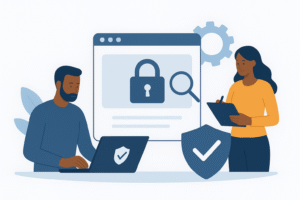 Penetration testing, often referred to as ethical hacking, simulates real-world attacks on your website to uncover vulnerabilities that traditional scanning tools might miss. Professional testers use the same techniques as hackers, but in a controlled environment, to assess how your defenses respond. This proactive approach allows you to fix potential entry points before they turn into real threats. Combining audits with regular penetration testing provides a holistic view of your website’s security posture and reveals insights into areas that need strengthening.
Penetration testing, often referred to as ethical hacking, simulates real-world attacks on your website to uncover vulnerabilities that traditional scanning tools might miss. Professional testers use the same techniques as hackers, but in a controlled environment, to assess how your defenses respond. This proactive approach allows you to fix potential entry points before they turn into real threats. Combining audits with regular penetration testing provides a holistic view of your website’s security posture and reveals insights into areas that need strengthening.
Moreover, conducting periodic audits builds trust with your clients and users. When visitors know that your site undergoes consistent testing and compliance checks, they are more likely to interact confidently with your brand. By making security audits and penetration testing an integral part of your website hardening strategy, you not only detect vulnerabilities early but also ensure continuous improvement in your defense architecture. In an age where cyber threats evolve daily, ongoing audits are the key to staying one step ahead of attackers and maintaining your digital integrity.
The Future of Website Hardening and AI-Powered Cybersecurity
As technology continues to advance, the future of website hardening lies in automation, artificial intelligence, and predictive security. Traditional protection methods — while effective — often rely on reactive approaches. However, AI-powered cybersecurity tools can analyze massive amounts of data in real-time, detecting and neutralizing threats long before they cause harm. Machine learning algorithms can identify unusual traffic patterns, suspicious login attempts, and malicious behavior that traditional systems might overlook. This intelligent, adaptive defense mechanism allows websites to evolve with threats, rather than lag behind them.
In the coming years, AI-driven website hardening services will redefine how organizations secure their digital environments. Automated patch management, behavioral analytics, and predictive intrusion detection will minimize human error and ensure consistent security standards. By learning from previous attacks, AI systems can predict new ones, making them invaluable tools for long-term digital resilience. This proactive approach means that your website isn’t just protected today — it’s prepared for the challenges of tomorrow.
However, even with AI advancements, human oversight remains critical. Automated systems are powerful, but human expertise ensures context-aware decisions and ethical judgment. The future of website hardening will depend on collaboration between intelligent technology and skilled cybersecurity professionals. This synergy will create a new era of adaptive website protection — where security evolves as quickly as the threats themselves, guaranteeing a safer, more reliable internet for everyone.
Conclusion
In today’s digital era, where cyber threats continue to grow in sophistication, website hardening is no longer optional — it is an absolute necessity. Every business, whether small or enterprise-level, must recognize that prevention is far more effective than recovery. From implementing secure coding practices to regular audits, SSL protection, firewalls, and database encryption, each layer of hardening adds to a comprehensive defense that safeguards your website’s reputation and performance.
At FixHackedSite, we specialize in transforming vulnerable websites into fully secured digital environments through professional website hardening services. Our mission is to ensure your site remains fast, safe, and resistant to every form of attack — giving you the confidence to grow your online presence without fear. Whether your website has been compromised before or you simply want to strengthen your defense, FixHackedSite provides tailored solutions designed to meet your exact security needs.
In conclusion, website hardening is an ongoing process that demands attention, consistency, and expertise. The internet may continue to evolve, but with the right strategy, vigilance, and the support of trusted professionals, your website can remain secure against even the most advanced threats. Let FixHackedSite help you build that resilience — because true digital success begins with a foundation of uncompromising security.
